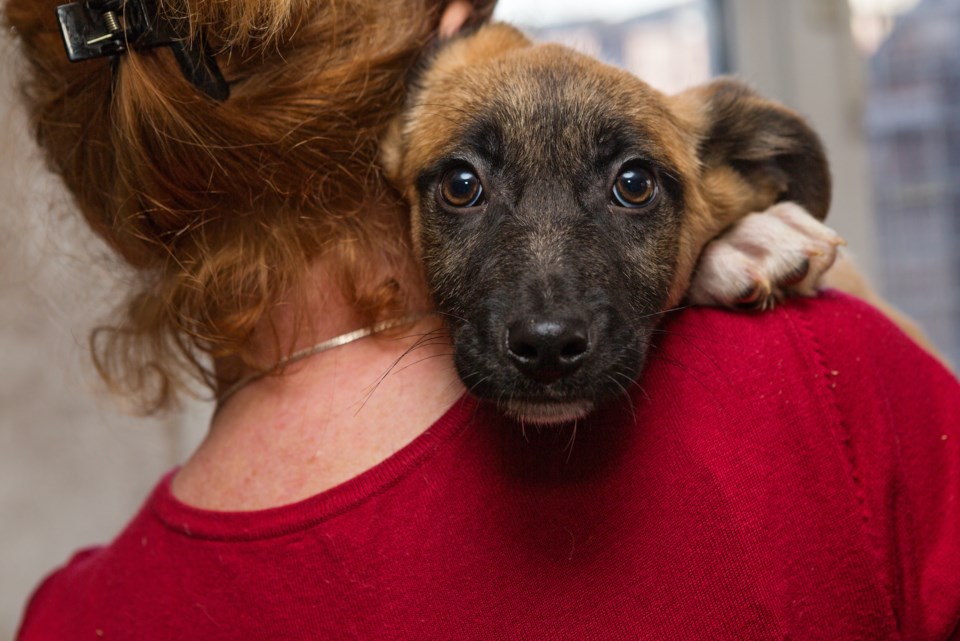As has been discussed in so many articles, sharing our lives with pets is good for our health. Not only do they make us healthier in normal times, in stressful times the benefit of a pandemic puppy (or cat), or other non-human companion, goes even further.
During a pandemic, people can be stressed and fearful for their lives and the lives of those they love. Research has shown that where there is a bond between human and animal, the presence of a non-human companion — especially a dog — decreases psychological arousal and stress, and creates physiological changes that make us feel better.
Pandemic pets
Early in the COVID-19 pandemic there was pet abandonment in large numbers in Wuhan, China. Fearful that the same would happen locally, many animal rescue organizations set out to empty their shelters. Worldwide there was an unprecedented upsurge in adoptions and fostering.
Although many people did this for the animals, they, perhaps unwittingly, set themselves up for better mental health during the pandemic. Aside from the stress-mitigating impacts of pets mentioned above, having a pet may be a powerful influencer in maintaining health-protective behaviours, such as eating well or going out for a walk.
Dogs and cats can increase physical rehabilitation goals through behaviour such as “bending, reaching, ambulating and using both arms in a functional manner to provide food, water, and grooming.” These basic activities involved in animal care actually provide exercise, which is very important for people who spend the day in a stationary position.
Human-animal relationships
When the COVID-19 pandemic began, I had just started a research study asking people about their relationships with their non-human companions. The preliminary results of this online survey include people between their late 30s and early 90s. They live in Canada, the United States, England, Ireland, Wales and Scotland and come from all walks of life. One-third have completed high school or less, 30 per cent completed college and/or an apprenticeship and the rest completed some kind of university degree. At the time of the survey, almost all of them were spending their time at home, some were alone, others with family and for others pets were their only companions.
When asked, in an open-ended question, what it has been like having animal companions with them during the pandemic, their answers included words like “comforting,” “good/great,” “helpful.” Several people said that they work full-time, so they were enjoying the time with their animal and getting to see what their pet does all day. Several people indicated that they would be lost without their pet.
One participant said, “I don’t know what I would do without the company of my dog, she has kept me going.” Another said, “It is the only thing that is keeping me sane.” And others said the presence of a pet was salvation (a life saver) and brought joy. There were also those who said they talk with their pet and that it helped stave off loneliness.
Artificial pets?
Another question I ask in my research is whether robot pets can be used to replace live animals, so it was interesting to see that robot pets were being provided to older adults during the COVID-19 pandemic.
In my survey during the COVID-19 pandemic, respondents were asked whether, given the choice, they would choose a robot pet or a live animal. Out of 102 people who answered this question, not one of them said they would choose a robot pet — even those who currently did not have a pet did not want a robot pet. The vast majority said they would choose a live pet, and a few said that they would rather have no pet at all.
When asked why, they said things like, “It is not about the companionship alone. It is about the emotional connection. To get that from a robotic creation is not love. We need the love that comes with these pets.” It was very clear that the robots were “not the same as a living breathing animal.” That a robot could not take the place of a pet because pets are “unique and make me smile and love them.”
The results of this survey are similar to those found during non-pandemic research: pets stave off loneliness, and living with pets helps people to be more active, even if it is only the movement associated with basic tasks, such as cleaning the litter box or filling food bowls. Most importantly, we are comforted by these non-human companions. The presence of a dog or a cat in the home may be the only thing between an isolated person and despair.
Given how important dogs, cats and other non-human companions are to our well-being, it is important to remember them when developing programs to support isolated people. When there is not enough money to go around, “it is not unheard of for people to feed their dog before they feed or acquire medications for themselves.”
As the economic reality of sustained unemployment unfolds, it is important for public services to consider not only food security for humans, but also for their non-human companions in order to prevent the possibility of a tsunami of pet abandonment due to an inability to provide care.![]()
L.F. Carver, Assistant Professor & Privacy and Ethics Officer at the Centre for Advanced Computing, Queen's University, Ontario
This article is republished from The Conversation under a Creative Commons license. Read the original article.



